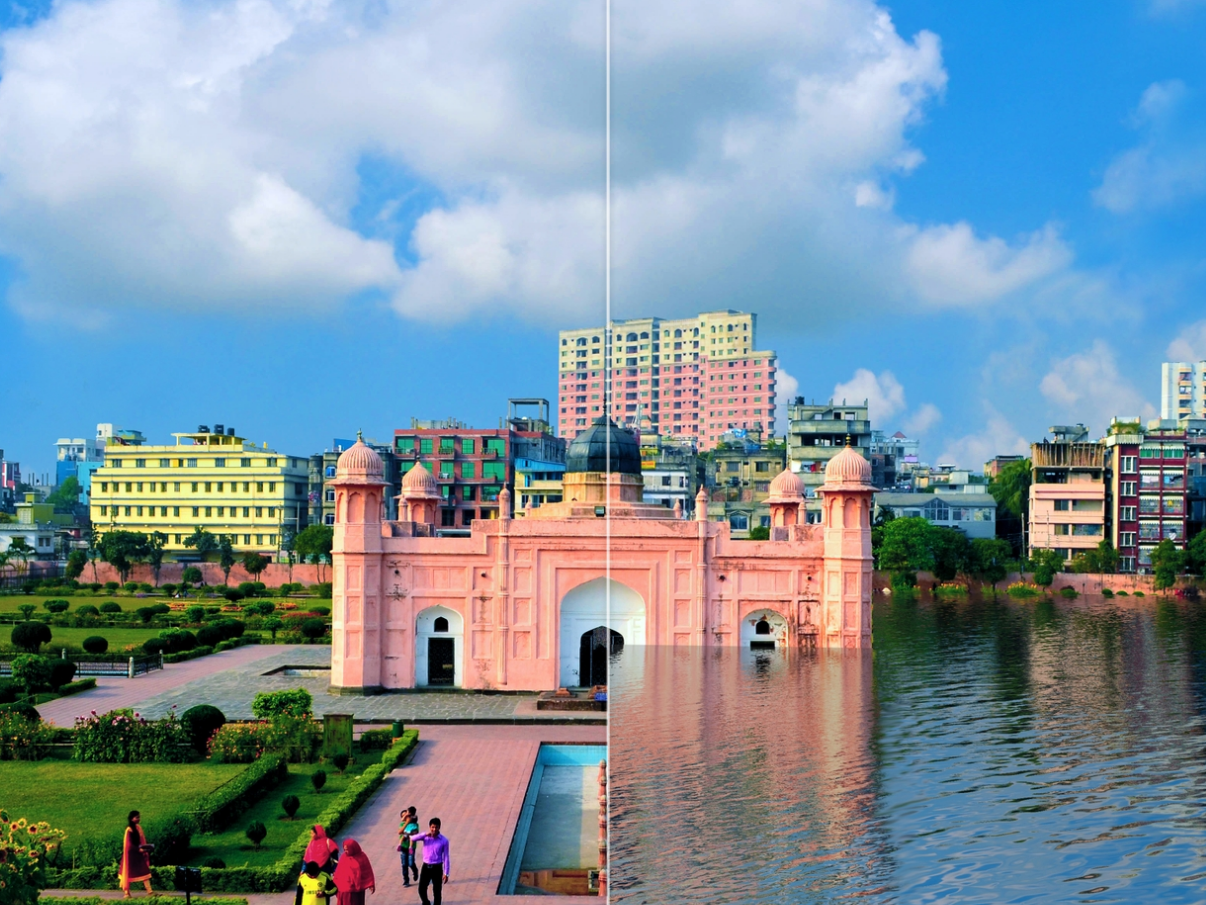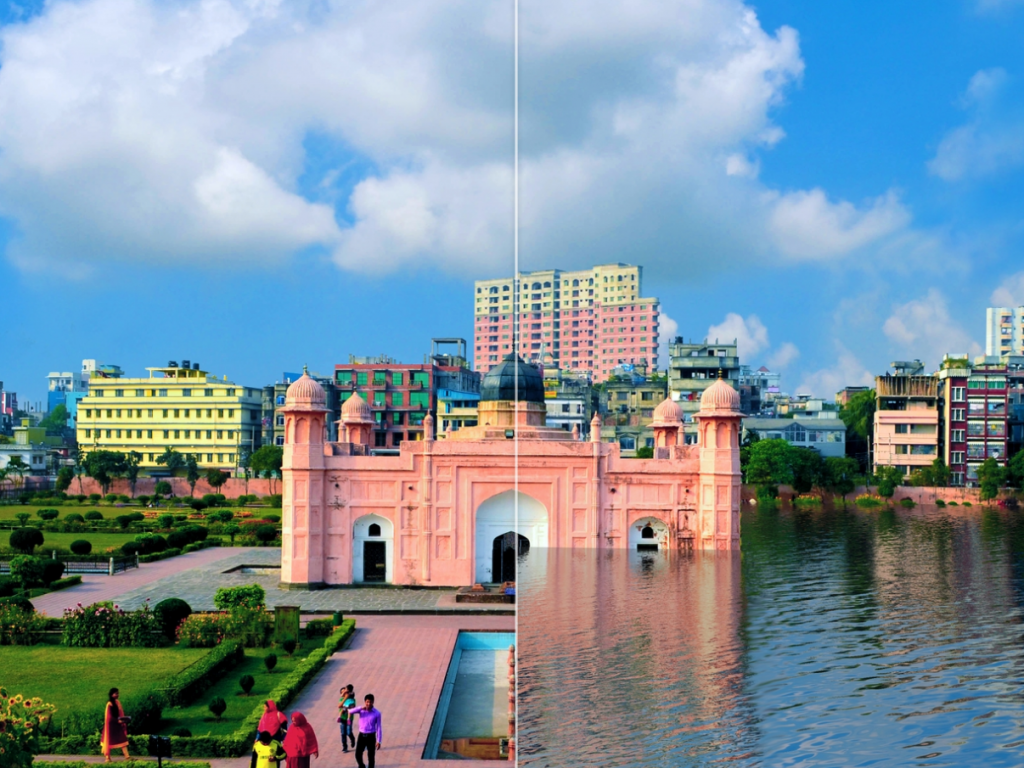
Climate Central
- A new study describes what would happen to global landmarks under various degrees of sea-level rise.
- In the best-case scenario, sea levels would rise nearly 10 feet in the next 200 to 2,000 years.
- But if global temperatures rise by 3 degrees Celsius, floods could overtake landmarks like the Statue of Liberty.
Several times each year, the tide in Venice, Italy, rises more than 2 feet above the average sea level. Sometimes, this results in mild flooding – inconvenient puddles along the sidewalk. But in certain years, like 2019, floods can swallow the city, damaging infrastructure and costing lives.
More cities will need to prepare for that reality as global temperatures climb, and sea levels rise along with them. A recent report from the UN Intergovernmental Panel on Climate Change (IPCC) found that human-caused emissions have already led the planet to warm by 1.1 degrees Celsius in the last 170 years. When global temperatures rise, ice sheets and glaciers melt, sending water into the ocean. Water also naturally expands as it warms, which raises the average sea level.
The IPCC report warned that sea levels will continue to rise for centuries to millennia, no matter what happens next.
A new study from Climate Central, a nonprofit research group, suggests that 4 degrees of warming could lead to nearly 30 feet of sea-level rise over the next 200 to 2,000 years.
In that worst-case scenario, according to the researchers, the resulting flooding would force at least 50 major cities to either start emptying out or mount unprecedented defenses against the water. High tides could encroach on land hosting 15% of the global population (about 1 billion people).
If the world continues on its current emissions path, global temperatures are projected to climb 3 degrees, which would cause seas to rise nearly 21 feet. In that case, more than 800 million people could be vulnerable to sea-level rise - and many the world's most important landmarks could be submerged in water.
Some of that can still be avoided, though. Under the best-case scenario, global temperatures would climb just 1.5 degrees Celsius over the next 200 to 2,000 years, leading to around 10 feet of sea-level rise. But that would require major systemic changes to cut emissions, since the world is currently on track to exceed 1.5 degrees of warming in the 2030s, according to the IPCC. Plus, even under that limited amount of warming, the Climate Central researchers estimate that 510 million people would be vulnerable to sea-level rise.
The graphics below show how landmarks such as the Burj Khalifa and Statue of Liberty would look under 3 degrees of warming.
Rising seas pose a particular threat to Asian landmarks
The Climate Central study estimates that Asian countries - particularly China, India, Indonesia, and Vietnam - are most vulnerable to sea-level rise.
The Temple of Literature in Hanoi, Vietnam, wouldn't experience any flooding under 1.5 degrees of warming, but it would under 3 degrees. Toggle back and forth on the image below to see the difference.
Floods would swallow the entrance to the Lungshan Temple in Taipei, Taiwan, if global sea levels rose nearly 21 feet.
The streets below the Lujiazui skyscrapers in Shanghai would also be covered in water. The study estimates that 83% of Shanghai's population is vulnerable to flooding under 1.5 degrees of warming, and 94% is vulnerable under 3 degrees.
If emissions continue on their current path, the Burj Khalifa in Dubai could wind up wading in water, too.
And the Lalbagh Fort in Dhaka, Bangladesh would no longer be accessible on foot. Half of Dhaka's population is vulnerable to flooding under 1.5 degrees of warming. Under 3 degrees of warming, that figures rises to 82%.
Landmarks in the US, Europe, and South America are also vulnerable
In the US, coastal cities like New York are particularly vulnerable to flooding. Based on the level of warming (1.1 degrees Celsius) alone, nearly 4% of New York City's population will experience flooding over the next 200 to 2,000 years . That figure could rise to 19% under 3 degrees of warming, which would leave the base of the Statue of Liberty inundated.
On the opposite coast, the Santa Monica Pier in California could disappear underwater if sea levels rose nearly 21 feet globally.
The UK's Buckingham Palace could get partially swallowed. The warming we've already seen means around 5% of the UK's population will be vulnerable to flooding over the coming centuries. With 3 degrees of warming, that share would jump to 11%.
If emissions continue on their current path, pedestrians would no longer be able to stroll through Aristotelous Square in Thessaloniki, Greece.
Nor would they be able to enter the State Hermitage Museum in St. Petersburg, Russia.
Under 3 degrees of warming, water could form a moat around the Plaza de España in Seville, Spain. Nearly 4% of Spain's population is vulnerable to flooding under 1.5 degrees of warming, according to the study. That figure rises to 8% under 3 degrees of warming.
A few landmarks, like the Plaza de la Catedral in Havana, Cuba, could get swallowed up entirely.
But there's still time: The study estimates that cutting emissions in half by 2030 could limit warming to just 1.5 degrees. In that case, the authors write, widespread flooding "may be limited to a handful of locations."
